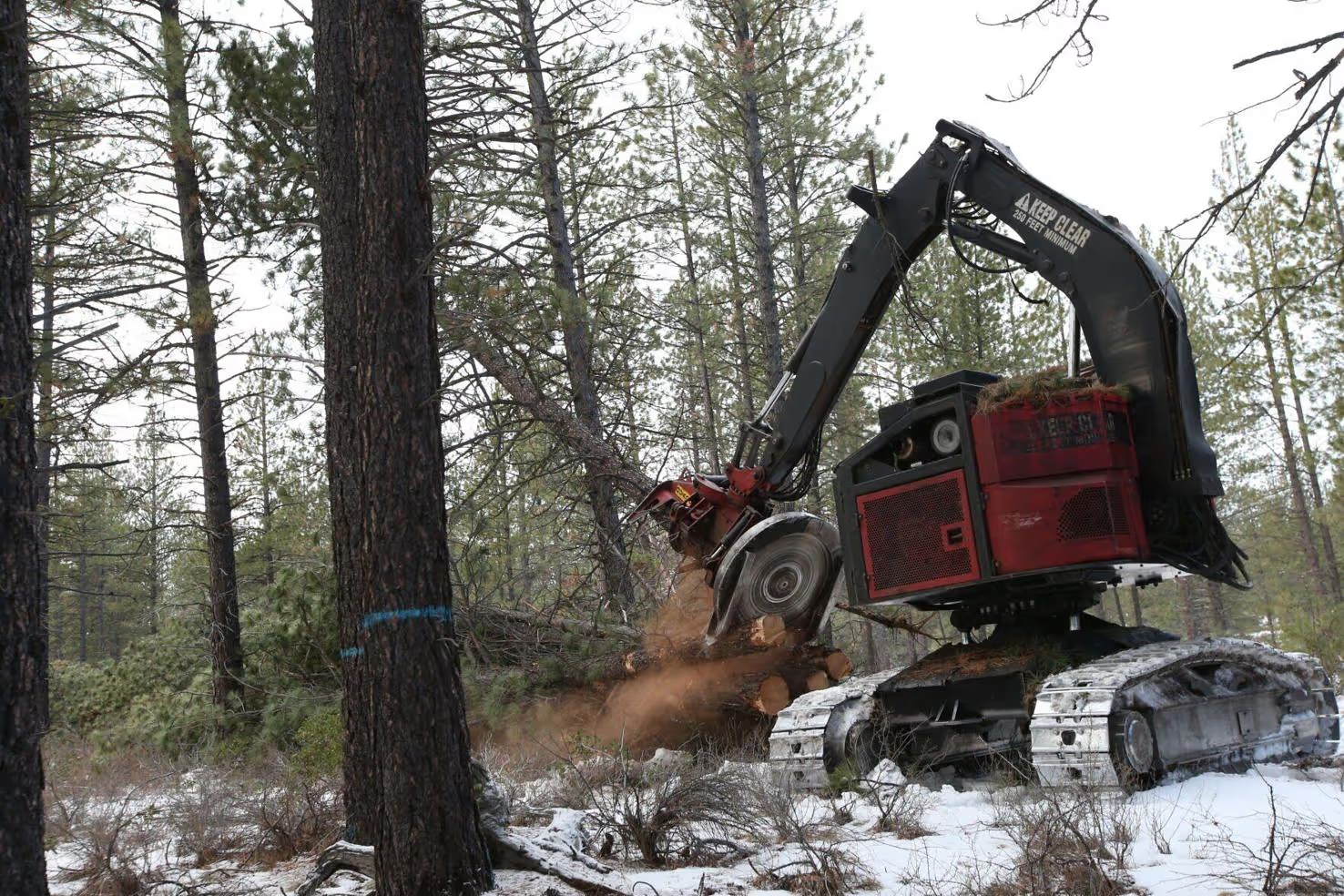Capitol Press - How Trump’s return may impact public, private land management

By Michael Kohn of the Bend Bulletin
The dust has hardly settled on one of the most fractious presidential elections in recent history and observers are already voicing their opinions on how the results will impact climate change mitigation, natural resources and federal land protections.
The direction of U.S. climate change commitments is a large, looming question but in Oregon many are wondering how the rollout of a second Donald Trump presidency will impact this state’s landscapes.
There are diverging viewpoints. Environmentalists are concerned Trump’s pro-business policies threaten protected federal lands, opening them up to natural resource extraction. But loggers, ranchers, farmers and those in mineral extraction say environmental policies have stifled their industries, and Trump’s reappearance will help tilt legislation back in their direction.
Sen. Ron Wyden, D-Ore., thinks a Trump administration will may unwind efforts to protect endangered species and curb carbon emissions.
“Donald Trump’s entire history has been to deny scientific reality and undermine every effort to protect endangered species as well as to battle the climate crisis that keeps worsening the threat of wildfires, floods and hurricanes,” Wyden told The Bend Bulletin.
Wyden is particularly concerned about the future of the Owyhee Canyonlands, a rugged corner of Malheur County in Southeast Oregon known for its jagged cliffs, wildlife and unusual rock formations. He has spent considerable time cobbling together a bipartisan group to protect the area. But that work is threatened by mining and oil and gas interests, he said.
Hopeful viewpoint
But there’s a more hopeful viewpoint from some in Jefferson County, where water shortages are often blamed on federal environmental regulations — in particular, the required releases of water from Wickiup Dam in winter for the Oregon spotted frog and several species of fish, water once reserved for agriculture.
“I think there is going to be more common sense,” said Sean Vibbert, a Madras-area grass seed farmer, when asked how a Trump administration may impact the distribution of water in Central Oregon. “It’s a ways down the road. I just hope there is more common sense that takes place,” he said.
Vibbert said any changes to federal law could take a while, but he’s looking forward to starting the process with greater accountability from federal regulators. As a start, he’d like to know if the water provided for the Oregon spotted frog has helped boost the frog’s population in the Upper Deschutes Basin.
“It’s very one-sided right now. We don’t know if what we are doing works or not,” he said.
The future allocation of available water hangs in the balance, but conservation groups agree that the new administration needs to maintain a high level of support for water conservation, including funding canal piping and on-farm improvements.
“Because water is a bipartisan issue, we hope that the federal government continues to invest in critical water investments through (federal) agencies,” said Kate Fitzpatrick, executive director of the Deschutes River Conservancy, a nonprofit.
Fitzpatrick said that if Trump makes changes to the Endangered Species Act, she remains confident that the various interests in the Deschutes Basin can continue to work collaboratively.
“The history of collaboration and results on the ground predated endangered species act issues and will endure through and beyond any potential future changes,” she said.
Endangered species concerns
Erik Fernandez, wilderness program manager for Oregon Wild, a nonprofit environmental group, said a loosening of regulations protecting wildlands is expected. He’s worried about increased logging of old-growth forests that could scar landscapes and ruin ancient ecosystems.
“We expect Trump and his allies will try to gut the Endangered Species Act, the Clean Air Act, the Clean Water Act, and the National Environmental Policy Act in the coming years,” said Fernandez. “We may not be able to save everything, but if we rally those who care about these issues, we can minimize the damage.”
But those who represent the timber industry see the incoming administration not as a threat but as an opportunity. Nick Smith, a spokesperson for American Forest Resource Council, a group that represents logging interests, anticipates renewed emphasis on active forest management on federal lands.
“The first Trump administration struggled to organize itself and to implement its land management and natural resource policies. They won’t make the same mistakes in pursuing their regulatory agenda,” he said.
Smith expects reversals of Biden administration political initiatives such as the National Old Growth Amendment and the Bureau of Land Management Public Lands Rule, regulations that prioritize forest health for wildlife and carbon capture. He also anticipates amendments to the “Eastside Screens,” a regulation that limits the logging of old-growth and large trees in six national forests in Oregon and Washington.
A greater emphasis will be placed on wildfire suppression and forest thinning, including more initial attack rather than managed fires that allow wildfires to burn, Smith says.
But dire warnings from environmentalists that the Endangered Species Act and the National Environmental Policy Act will be gutted are overblown, he said. He calls these “bedrock” environmental laws.
How President-elect Trump’s environmental and business policies impact Oregon’s wildlands remains a dangling question mark. Farmers, environmentalist groups and others with skin in the game will prepare for what comes next. But if history is any guide, collaboration in the Deschutes Basin still remains a likely outcome.

